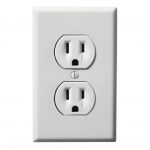Dynamic Range – By Charlie Santmire
Hello,
I’m Charlie Santmire. I started The Sound Environment in 1970. My idea was to provide high-performance audio systems for music lovers. Today my associates and I are doing the same thing. Our research has become far more refined and our ability to provide really good systems over a broad range of prices has improved greatly. Some of my associates have suggested that I tell my story and provide my current thoughts about systems as developments occur.
I will try to write on various subjects as often as I can. I welcome your input, thoughts on what you would like to see covered, and questions as we move along. Just click HERE to email me directly.
Dynamic Range What does that mean?
The Sound Environment is an operation endeavoring to bring reproduced music to its customers at best value not lowest price. We have been doing that for more than 47 years.
I was reading an article recently which was about Vinyl versus Digital audio reproduction sources. Vinyl means phonograph records and digital means any digital recording of music. The article was perhaps intended to be entertaining as well as informative.
Our showroom presents both digital and analog source equipment over a wide range of prices and performance capabilities.
These days and perhaps in previous days as well, writers often take short cuts assuming that the reader knows the meaning of the words or the things being referred to. There are dangers in this assumption which can lead to misunderstandings and leave defenders of one medium over the other remaining unconvinced because they are using their own definitions and experiences – not trying to understand each other.
In either case, vinyl or digital, we are talking about the final element in a chain. The phonograph record, being an analog medium, the Compact Disc or other digital file being a digitization of the original analog music source.
The original recording in either case may have been analog or digital. The issue of the originating recording and its transformation to a final analog or digital recording is often complicated and not necessarily what you think it might be. I use the word “originating” to differentiate from the word “Master.”
I attended a talk given a couple of years back that included a person who plans and makes high quality recordings for her own company. She was pretty negative about the so-called Master Recording. In many modern recordings there is a multi-track digital recording of the music. The many tracks may not have been made at the same time on the same equipment which gives rise to many issues. From this multitrack recording a so- called Master is made. That means a two-or-more channel recording from which the phonograph record or digital recording is made. The point was that the so-called Master is a mix done by a recording engineer expressing their preferences generally heard on a monitor system which has its own characteristics.
From “Master Recording’ comes the term “remastered.” This means that the recording you are presented with is from a new mix of the original multi-track recording. It will be different but not necessarily better. Sometimes the “remastering” is made on newer, better equipment which can result in better sound, if the recording engineer does not put his own perception into channel balances, equalization, etcetera.
It is also true in a few cases the original recording may be analog. Usually these are made on a very good, high speed multichannel analog tape machine. There is still likely to be a mix if the original recording was more than two channels or if the mix engineer wants to “fix” things. Lastly there are a very few “direct to disc” recordings where a two-channel master recording is cut directly on a master disc.
In some cases with classical or jazz performances, a live performance as opposed to studio performance is recorded. In most cases these recording will have the greatest musical authenticity, be the most musically interesting because they are generally not “fixed.” They are as the performance was made.
For the purposes of this article we will assume the original is music being played on so called acoustic instruments.
(non-amplified, non-electronic, no speakers in the musical instrument itself), in other words wind and string instruments plus drums and keyboard instruments such as piano, harpsichord and pipe organ.
Let’s be Clear About Some Definitions
Dynamic range has nothing to do with loudness. If a sound is loud or soft it has a certain Sound Pressure Level (SPL) normally measured in decibels (dB). Zero decibels has an arbitrary defined value in terms of air pressure of 20μPascals. This is a level that has been equated to the softest sound most young people can hear.
There are many places you can go to look up the numbers and how loud some sound might be. You can find equal loudness curves which are interesting. This google search can lead you to many of these writings. Some are difficult to understand unless you have a substantial background. I would be happy to discuss any of this. Just send me an E-mail.
One must always factor is the distance from the source. In an open environment the SPL decreases at the rate of 6 dB for every doubling of the distance from the source. A given source medium available to the end user can accommodate a certain dynamic range with conditions. The medium itself does not have dynamic range. It has a noise floor and it has a maximum record level. It can accommodate a dynamic range.
Dynamic range refers to the range between a soft sound and a loud sound. Dynamic range is difficult to measure but could be over 100dB for some music but for most music it is probably in the range of 60-70 dB. Finger cymbals or a brush on a drum head for instance might be at a level of only 10-20 dB SPL, even if you are fairly close. This sound can be heard below the noise level of the environment because it is distinctive from random noise.
If you wish to reproduce a sound at its original level, you only need a sound system capable of reaching that level at the distance you might be from the sound. For instance, a concert grand piano at around 20 feet listening distance can exceed 90dB in peak level. The piano is a percussion instrument. The hammer hits the string, unlike a harpsichord where the string is plucked. Played softly it might be only 20dB SPL at 20 feet. These numbers are intended to be illustrative, not absolute. You may find writings that indicate more precise values than I am using here.
Much modern popular music intended to be reproduced in a difficult environment like a car is very compressed. It is intended by the producers to be loud, so it is produced at the top of the digital medium capability and the dynamic range may be only 10 dB or so. See Loudness war.
Dynamic range has to do with how soft and loud an instrument or group of instruments can play being listened to at some particular distance. A source medium has signal to noise ratio not dynamic range. The maximum continuous loudness in SPL of a tone is about 194 dB or one atmosphere at sea level. For the first half wave, the pressure half -cycle, can be any value. That is an explosion. The negative half cycle cannot be more than vacuum. That is where the 194 dB number comes from.
The maximum recording level for a CD is 96 dB (216) above the zero level. Thus 16/44.1 – 16 bits sampled 44.1 thousand times per second.
Some digital sources have a lower bit rate and lower sampling rate, so the dynamic range capability is lower. For really accurate music reproduction these recording methods such as MP3 and digital radio will not suffice, yet we can get something of the music out of it.
20 or 24 bit recordings increase the dynamic range that can be handled but is essentially immaterial for most music. It does give the recording engineer the option of recording at a slightly lower level so they do not to run into the maximum record level. The so called high definition recording methods main benefit is the higher sampling rate thus moving closer to an analog recording.
With analog there is essential no minimum level, although, there is a noise floor. So, we are interested in the so-called signal to noise ratio. A phonograph record at its best can accommodate a significantly lower possible dynamic range than a CD. I am not sure what the numbers are but if there are no really deep bass notes it could be in the range of 60 dB.
Another consideration is the noise floor of the rest of the reproducing system and of the acoustic environment in which the music is being reproduced. It is often surprisingly high.
Another factor in comparison of analog versus digital is the types of distortion to which each is more prone. Many analog devices first produce harmonic distortion. In other words, if the frequency in the recording is let’s say 130.81 Hz, (an octave below middle C) then 2nd harmonic distortion would produce some signal at 261.63 Hz, (middle C). This type of distortion is likely in an analog system whether it be a phonograph record or a speaker. This type of distortion is generally not unpleasant since it is harmonically related to the signal but it does color the sound. Usually it makes it seem to most of us “warmer.” Some people prefer this warmer sound.
Current recording techniques can emphasize the upper midrange (around 2000Hz to 4000 Hz or a bit more). This is generally because of the proximity of the microphone to the instrument. Some reproducing equipment can add to this emphasis and produce additional non-harmonic distortion in this range.
Some tube electronics will decrease this emphasis and be more pleasant although musical detail is lost.
So, where are we? It is up to you whether you want to listen to phonograph records or a digital source. Some online digital sources offer CD quality and a great deal of music at a relatively low subscription fee. Tidal is one of those. We can demonstrate all of these options, so you can choose.
The type of music to which you listen will also affect your preference in reproducing equipment. This may all seem very complicated but it need not be. Just stop in to The Sound Environment. You can listen to analog and digital sources covering a very wide range of prices. You can bring your own recordings. For best service, especially if you are bringing recordings, please make an appointment.
If you currently have a record player and a CD player at home and prefer the record player, you should bear in mind that you prefer a particular record player to a particular CD player in the context of an overall system and the music you generally play. That proves nothing about Vinyl VS. Digital.
Please come in and we will demonstrate what each can do.
You are welcome to e-mail me at charlie@soundenvironment.com




